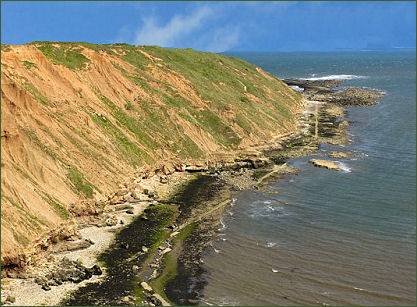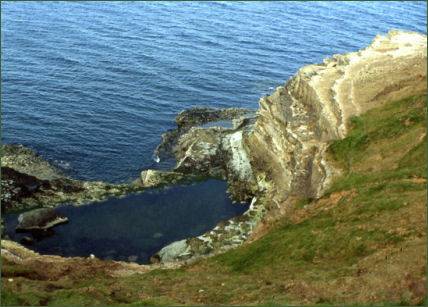Filey Brigg
OS grid reference:- TA 126 817
The long narrow peninsula of Filey Brigg lies around a mile to the north of the seaside resort of Filey and offers great views over Filey Bay.


Its steep cliffs rise to 20 metres high and consist of a variety of material, ranging from pure sandstone to pure limestone. Below the cliffs, the promontory continues as a blade of rock, barely above the waves. At low tide, this rocky point is a haven for fishermen, naturalists and fossil hunters. The landward end of the peninsula of Filey Brigg is known as Carr Naze, whilst the long neck of rock at the seaward end is called the Brigg. In the early 1970s the fields on top of the Brigg were turned into Filey Brigg Country Park. The biology and geology of Filey Brigg place it among Sites of Special Scientific Interest in Yorkshire. The Spittal, an enigmatic rock structure running out from the Brigg, may be the remains of an ancient harbour, perhaps serving the Roman signal station, which once stood on the cliffs above. The cliffs and headland are unstable and subject to erosion, visitors should therefore take care walking on, or under, the cliffs.
The history of Filey Brigg features stories of ship wrecks and smuggling. Today divers explore the wrecks and the extensive marine life. The rocks of Filey Brigg attract numerous species of birds, including oystercatchers, redshanks and purple sandpipers, which visit the shoreline in nationally significant numbers during the winter months while seals may often be sighted on the beach .
Two legends legends exist concerning the formation of Filey Brigg. One of these relates that it was built by the Devil, who, having lost his hammer in the sea, reached for it with his hand but caught a fish instead. Since then Filey Brigg has carried the marks of the Devil's grasp on its shoulders. Another legend states that the rocks were the bones of a dragon, which terrorized the area but was outsmarted by the townsfolk, who drowned it when it dived into the sea to wash parkin from between its teeth
